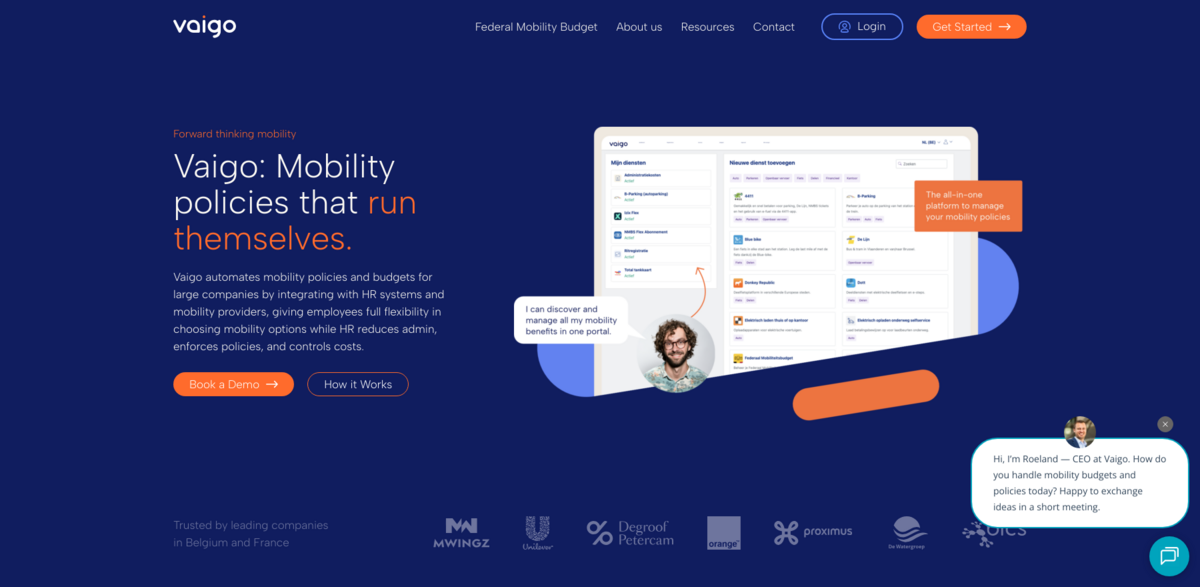What is the Federal Mobility Budget?
The Federal Mobility Budget (FMB) is a fresh, flexible way for employees to swap their company car for a mobility package that’s smarter, greener, and way more in tune with today’s work-life vibe. Instead of being stuck with just a car, employees get a budget based on what a company car would cost, but with the freedom to spend it on a whole range of sustainable options. It’s all about fairness and predictability—everyone gets a benefit equal to the value of a car, but with way more choice. This keeps things simple and compliant for employers, while giving employees the freedom to pick what really works for them.
Main Benefits and Key Facts
Here’s the lowdown on why the Federal Mobility Budget is a game-changer:
- Budget capped at 20% of the employee’s gross annual salary
- Annual budget ranges between €3,055 and €16,293 (indexed for 2024)
- Holiday pay and end-of-year bonuses don’t count towards the gross wage calculation
- Unused budget at year-end can be cashed out under favorable tax conditions
- Two calculation methods: Actual Cost (real expenses) or Forfaitary (fixed formula)
How is the Federal Mobility Budget Calculated?
The FMB is tailored for each employee using one of two approaches. First, there’s the Actual Cost method, which looks at the real, historical total cost of ownership of the company car—think leasing, insurance, maintenance, fuel or electricity, taxes, and any non-deductible expenses. Then, there’s the Forfaitary or lump-sum method, which uses a fixed formula, usually based on the annual lease or a percentage of the car’s catalogue value, plus a variable part for private and commuting kilometers, multiplied by a standard cost per kilometer. This way, the budget is always fair and transparent.
Company Car Integration: Keeping It Fair and Sustainable
Employees who want to keep their company car can do so within the Federal Mobility Budget, as long as the car meets strict sustainability and budget rules. All costs tied to the car—leasing, insurance, maintenance, fuel or electricity—are deducted from the total mobility budget. This keeps the whole setup fair, crystal clear, and fully compliant with legal requirements. So, no surprises, just smooth sailing.
Sustainable Mobility and Housing: Freedom to Choose Greener Options
At the heart of the Federal Mobility Budget is a push for greener living and commuting. Employees can use their budget for eco-friendly options like public transport, cycling, shared mobility, or even housing close to work. This isn’t just good for the planet—it helps companies cut fleet costs and hit their environmental goals, all while giving employees real flexibility and value. It’s a win-win.
Project Impact: Supporting Sustainable Development Goals
- SDG 3: Good Health and Well-being – Encouraging active and healthy commuting options
- SDG 7: Affordable and Clean Energy – Promoting electric vehicles and sustainable transport
- SDG 11: Sustainable Cities and Communities – Supporting eco-friendly housing and mobility
- SDG 12: Responsible Consumption and Production – Reducing fleet costs and emissions
- SDG 13: Climate Action – Helping organizations meet environmental targets
Cash Out: Turning Unused Budget into Extra Value
Here’s a neat feature: any part of the Federal Mobility Budget that’s left unused at the end of the year doesn’t just disappear. Instead, it’s converted into cash for the employee, with favorable tax treatment. The system automatically tracks, calculates, and pays out the remaining balance, giving employees a little extra something while keeping everything fully compliant and under control. It’s a smart way to add value and keep everyone happy.





















